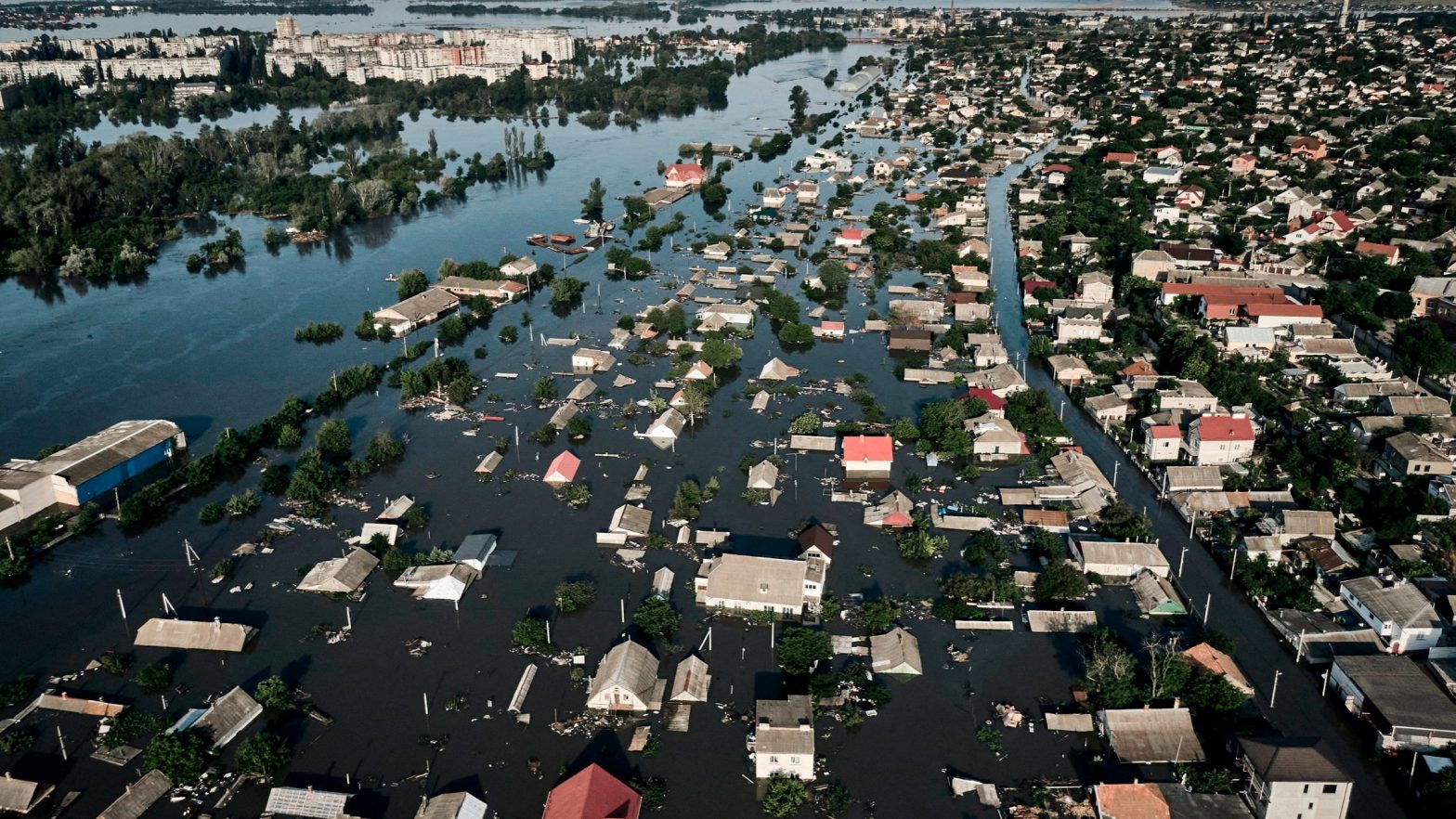In a recent article, Time Magazine referred to Ukraine’s dam collapse as the country’s Chernobyl without realizing that Chernobyl is in Ukraine. Twitter also flagged this misinformation:
Also Read: How much does Leopard 2 tank cost? Ukraine to receive Germany’s battle tank
This faux paus by the media outlet drew the ire of several social media users insinuating the US’s ignorance regarding the rest of the world.
Ukraine’s dam disaster
Explosions ripped through Ukraine’s massive Nova Kakhovka hydroelectric dam on Tuesday, draining one of the continent’s largest artificial reservoirs. It forced the evacuation of thousands of people downstream, poisoned the soil, wrecked a big power generator, and will cause future water supply issues.
Kyiv places the finger at Russia, which took control of the dam on February 24, 2022, the first day of its full-scale invasion of Ukraine. The Kremlin pointed the finger at Ukraine but provided no proof.
The immediate impact is on people living downstream; the Dnipro’s western bank is under Ukrainian administration, while the east is still under Russian authority.
According to Oleksandr Prokudin, the Ukrainian leader of the Kherson area, up to 16,000 people in Ukrainian-controlled territory are in danger and many would have to flee their homes.
Also Read: Russia’s Chernobyl seizure seen as nuclear risk ‘nightmare’
Environmental Impact
Andrij Melnyk, Ukraine’s Deputy Foreign Minister, described the Nova Kakhovka dam rupture as “the worst environmental disaster in Europe since Chernobyl.”
The consequences are numerous, ranging from displacing people to drowning animals and contaminating the ecosystem.
Effect of Oil Spill
In his overnight address posted early Wednesday, Zelensky called the alleged attack “ecocide,” saying: “An oil slick of at least 150 tons formed and was taken by the current to the Black Sea. We cannot yet predict how much of the chemicals, fertilizers and oil products stored in the flooded areas will end up in the rivers and sea.” The attack on the Nova Kakhovka dam in southern Ukraine threatens tens of thousands of people, the country’s energy grid and the environment.
Impact on Power & Energy
The collapse of the Nova Kakhovka dam could have an influence on the battle-scarred Zaporizhzhia Nuclear Power Plant, which is also seized by Russian soldiers. The plant relies on reservoir water to cool its six reactors, but they are currently in “cold shutdown,” and the plant’s cooling pool is full, requiring only a “few litres per second,” according to Leon Cizelj, president of the European Nuclear Society.
According to the International Atomic Energy Agency, the plant has enough cooling water to last around six months.
“The facility has back-up options available, and there is no short-term risk to nuclear safety and security,” stated Director General Rafael Mariano Grossi.
Also Read: Has Russia really captured Bakhmut? Ukraine denies private military group Wagner’s claims
According to Vitaliy Mukhin, a strategic adviser to Kyiv’s state-owned hydropower corporation Ukrhydroenergo, the dam’s destruction will not have an immediate impact on Ukraine’s national electrical grid. Nova Kakhovka, which was developed in the 1950s, has a capacity of 357 megawatts but has not generated much power since Russian control.
According to Olena Pavlenko, president of Kyiv’s DiXi group energy think tank, the hydropower plant would have been a vital source of clean energy and an important part of Ukraine’s post-war energy balance.







